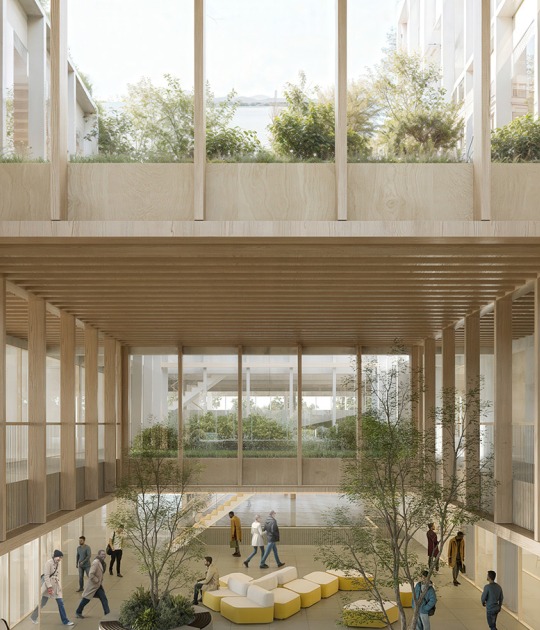The Liget Budapest Project will realize five new museum buildings at a cost of 75 billion HUF (approx. € 252.4m). The project is a large effort to revive Budapest's 200-year-old City Park and have it become a Hungarian landmark and global cultural destination. According to plans, construction work will commence in 2016 and open in March 2018.
The results of the open, international architectural design competition for four new museum buildings were announced last December:
The Ethnographic Museum will be constructed based on the design by Vallet de Martinis DIID Architectes of France, the Hungarian Museum of Architecture and the FotoMuzeum Budapest will be built according to the design by Középülettervező Zrt. of Hungary, and the Hungarian House of Music based on the design by Sou Fujimoto, a Japanese star architect.
The jury has ranked two competitive projects in first place in the restricted international architectural design competition for the construction of the New National Gallery–Ludwig Museum building. The jury pronounced the designs of SANAA and Snøhetta,[...] The final design will be chosen from among these two projects during meetings with the architects, based on professional and financial considerations. In addition to the two competitors in first place, the jury gave out two second place awards to Nieto Sobejano Arquitectos and to the joint proposal of Balázs Mihály's Architect Studio and the Faculty of Architecture of Budapest University of Technology and Economics.
“The aim of the restricted competition, in which star architects were also invited to participate, was to provide a home for the Budapest New National Gallery–Ludwig Museum in a modern, contemporary building of outstanding architectural value that meets 21st-century requirements and is worthy both for the City Park and for one of the most important public collections of Hungary,” said László Baán, the ministerial commissioner of the Liget Budapest Project. [...]
The 11-member jury of Hungarian and international experts not only evaluated the architectural quality and ideas to be applied in regard to the future museum, but also assessed the technological and functional solutions (e.g. anticipated visitor experience and museum technological solutions), the sustainability of the designed building (energy efficiency, ecology,) its dialogue with the environment (including aspects relating to the green area, its embeddedness in the urban landscape, its connection with the City Park, access to the building), and the expected expenditure (costs of implementation and operational costs). Since the connection between the park and the built environment is a top priority in the Liget Budapest Project, aimed at the renewal of the City Park, the designs propose a substantial increase in the City Park’s green areas. This spring, Városliget Zrt. will announce a landscape design competition for the complete renewal of the park.
JURY.-
- László Baán, ministerial commissioner for the Liget Budapest Project and director-general of the Museum of Fine Arts.
- Roueida Ayache, architect; Paula Cadima, deputy head of department at AA London School of Architecture, architect.
- Edwin Heathcote, architectural critic for the Financial Times, architect.
- Eva Jiricna, architect.
- Juhani Katainen, former dean of the faculty of architecture of Tampere University of Technology.
- Imre Bálint, the president of the Budapest Chamber of Architecture, architect.
- György Fekete, president of the Hungarian Academy of Arts, interior architect.
- Sándor Finta, chief architect of Budapest; Zsolt Füleky, deputy-state secretary for architecture, architect.
- László György Sáros, president of the Association of Hungarian Architects, architect.
































